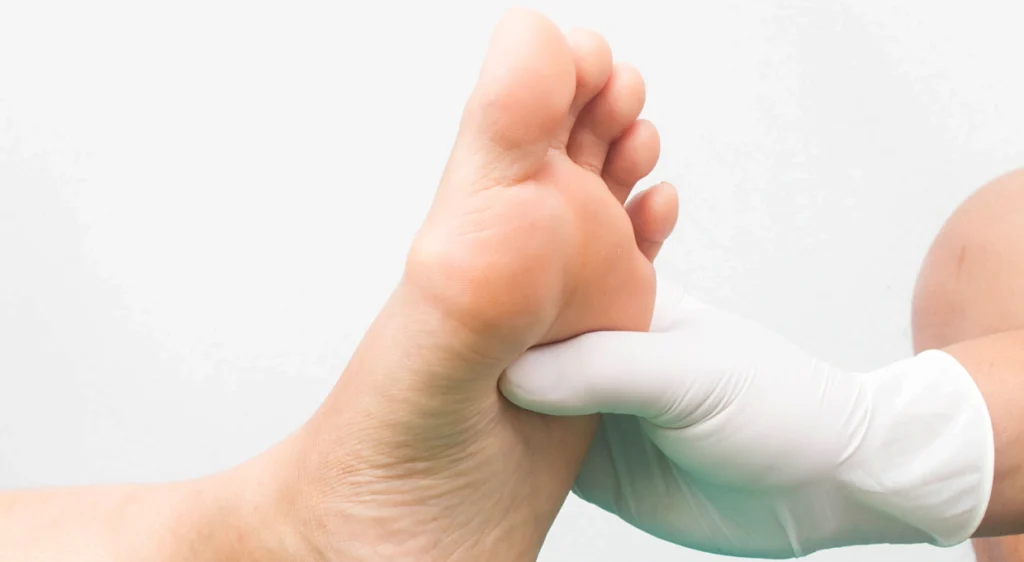Metatarsalgia is a painful condition affecting the metatarsal region of the foot, commonly known as the plantar pads. This pain can be debilitating, especially for those who spend a lot of time on their feet or wear inappropriate footwear. In this article, we discuss the causes, symptoms and treatments of metatarsalgia, with a special focus on surgery as a definitive solution.
Causes of Metatarsalgia
Metatarsalgia can have multiple causes, among them:
- Inappropriate Footwear: High heels and narrow-toed shoes put excessive pressure on the metatarsals.
- Overload: High impact activities such as running or jumping.
- Foot Abnormalities: Flat feet or high arches may contribute to uneven weight distribution.
- Aging: The loss of the fat pad in the foot with age.
- Systemic Diseases: Rheumatoid arthritis, gout and diabetes.
Metatarsalgia symptoms
Symptoms of metatarsalgia include:
- Acute pain or burning in the sole of the foot.
- Worsening of pain when standing, walking or running.
- Feeling of having a stone in your shoe.
- Calluses in the pressure areas.
Conservative Treatments
Before considering surgery, conservative treatments are recommended, such as:
- Change of Footwear: Use of shoes with cushioned soles and ample room for the toes.
- Orthopedic Insoles: They help redistribute pressure in the foot.
- Physiotherapy: Exercises to strengthen foot muscles and improve mobility.
- Medications: Analgesics and anti-inflammatory drugs to relieve pain and inflammation.
Surgery for Metatarsalgia

When conservative treatments do not provide relief, surgery may be necessary. Surgery for metatarsalgia focuses on realigning the metatarsal bones to reduce pressure on the affected areas.
Surgical Procedure
- Minimally Invasive Technique: Small incisions allow the insertion of surgical instruments to correct anomalies.
- Bone Realignment: The metatarsal bones are adjusted for better weight distribution.
- Fixation: Screws or plates are used to maintain the new alignment.
Benefits of Surgery
- Pain Relief: Elimination of chronic pain in the metatarsal region.
- Improved Foot Function: Allows walking and activities without discomfort.
- Rapid Recovery: The minimally invasive technique reduces recovery time.
Recovery Process
- Immediately After Surgery: The patient can walk with post-surgical footwear.
- Follow-up: Regular consultations to monitor recovery and remove stitches.
- Rehabilitation: Physical therapy exercises to regain strength and mobility.
Prevention of Metatarsalgia
To prevent recurrence of metatarsalgia, it is recommended:
- Choosing Appropriate Footwear: Shoes with good support and cushioning.
- Maintain a Healthy Weight: Reduces pressure on the feet.
- Perform Regular Exercises: Strengthening of foot and leg muscles.
- Avoid High Impact Activities: Opt for low impact exercises such as swimming or cycling.
Conclusion
Metatarsalgia is a treatable condition, and with proper diagnosis, patients can find significant relief. Surgery is a viable option for those who do not respond to conservative treatments, offering a definitive solution to foot pain and dysfunction. If you suffer from metatarsalgia and conservative treatments have not worked, do not hesitate to contact Clínica San Román. Our team of specialists is here to offer you the best care and personalized treatment. Contact us today to schedule an appointment and say goodbye to pain in your plantar pads.



